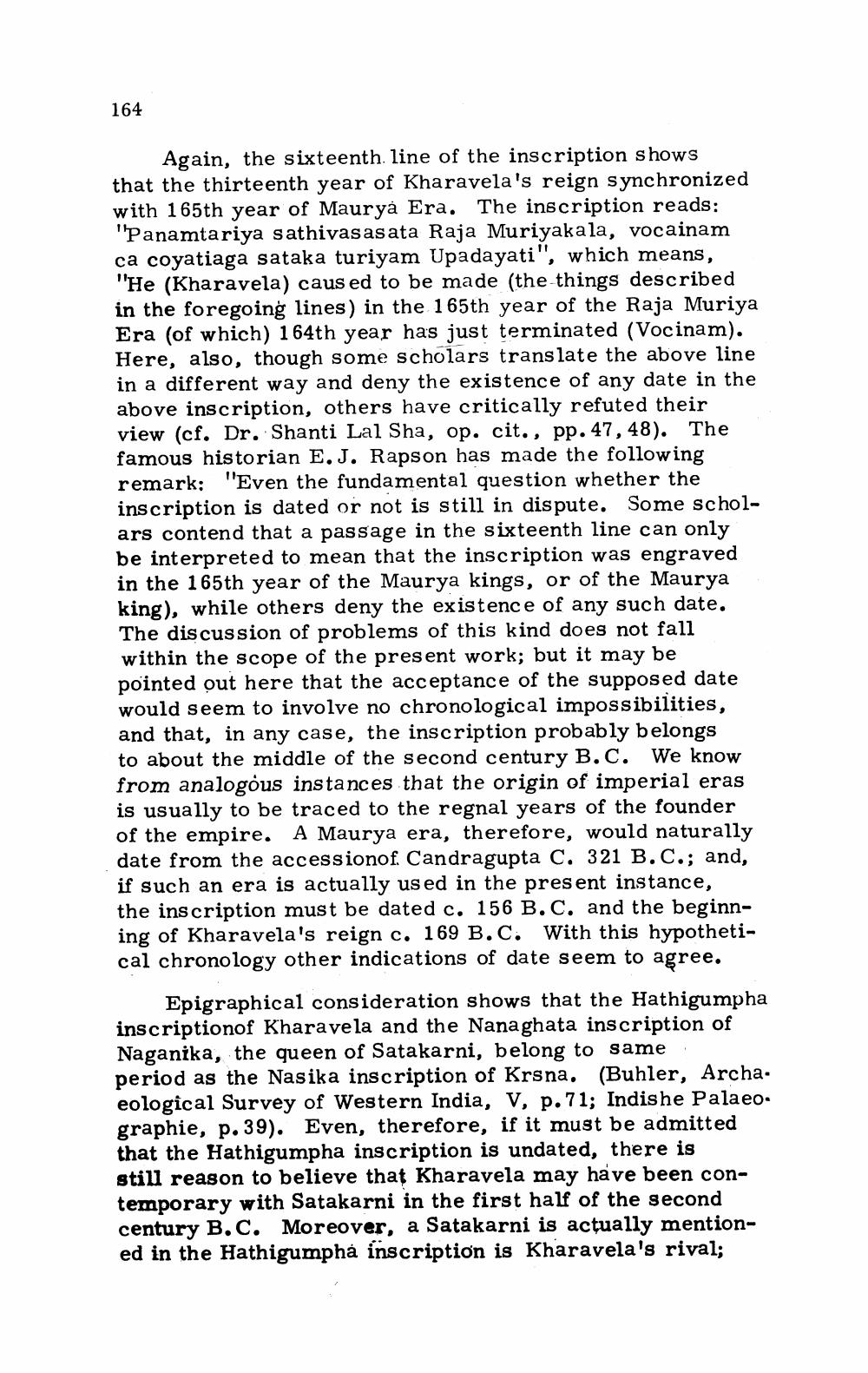________________
164
Again, the sixteenth. line of the inscription shows that the thirteenth year of Kharavela's reign synchronized with 165th year of Maurya Era. The inscription reads: "Panamtariya sathiyasasata Raja Muriyakala, vocainam ca coyatiaga sataka turiyam Upadayati", which means, "He (Kharavela) caused to be made (the things described in the foregoing lines) in the 165th year of the Raja Muriya Era (of which) 164th year has just terminated (Vocinam). Here, also, though some scholars translate the above line in a different way and deny the existence of any date in the above inscription, others have critically refuted their view (cf. Dr. Shanti Lal Sha, op. cit., pp. 47, 48). The famous historian E.J. Rapson has made the following remark: "Even the fundamental question whether the inscription is dated or not is still in dispute. Some scholars contend that a passage in the sixteenth line can only be interpreted to mean that the inscription was engraved in the 165th year of the Maurya kings, or of the Maurya king), while others deny the existence of any such date. The discussion of problems of this kind does not fall within the scope of the present work; but it may be pointed out here that the acceptance of the supposed date would seem to involve no chronological impossibilities, and that, in any case, the inscription probably belongs to about the middle of the second century BC. We know from analogous instances that the origin of imperial eras is usually to be traced to the regnal years of the founder of the empire. A Maurya era, therefore, would naturally date from the accessionof. Candragupta C. 321 B.C.; and, if such an era is actually used in the present instance, the inscription must be dated c. 156 B.C. and the beginning of Kharavela's reign c. 169 B.C. With this hypothetical chronology other indications of date seem to agree.
Epigraphical consideration shows that the Hathigumpha inscriptionof Kharavela and the Nana ghata inscription of Naganika, the queen of Satakarni, belong to same period as the Nasika inscription of Krsna, (Buhler, Archa. eological Survey of Western India, V, p.71; Indishe Palaeo. graphie, p.39). Even, therefore, if it must be admitted that the Hathigumpha inscription is undated, there is still reason to believe that Kharavela may have been contemporary with Satakarni in the first half of the second century B.C. Moreover, a Satakarni is actually mentioned in the Hathigumpha inscription is Kharavela's rival;




